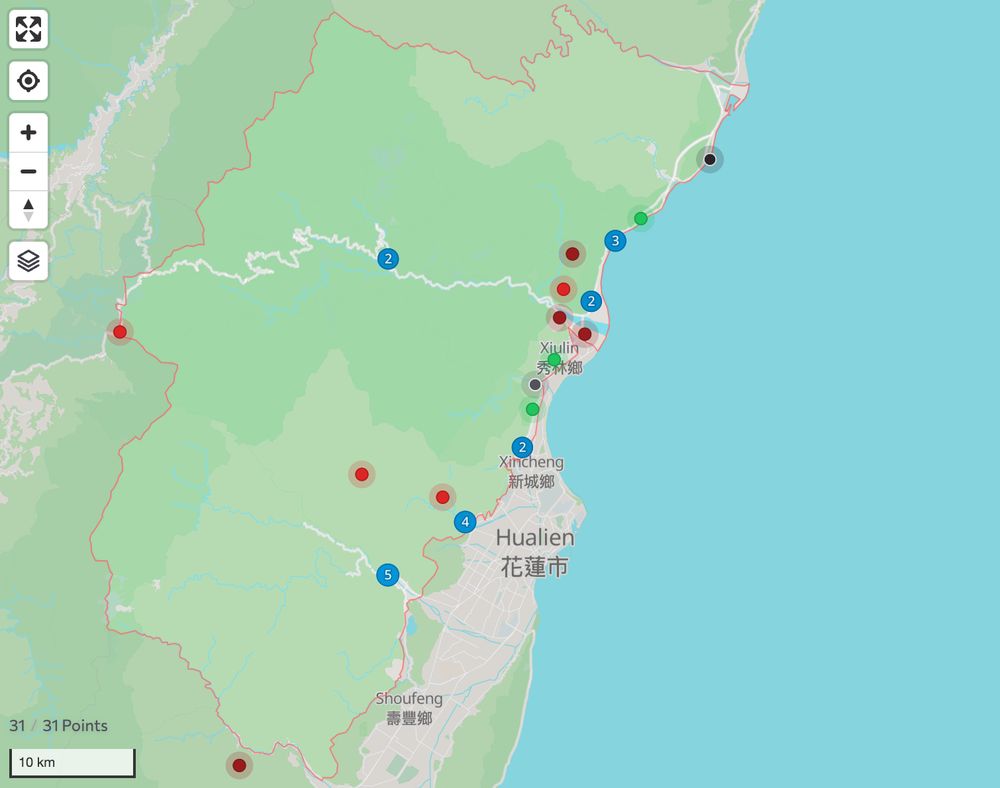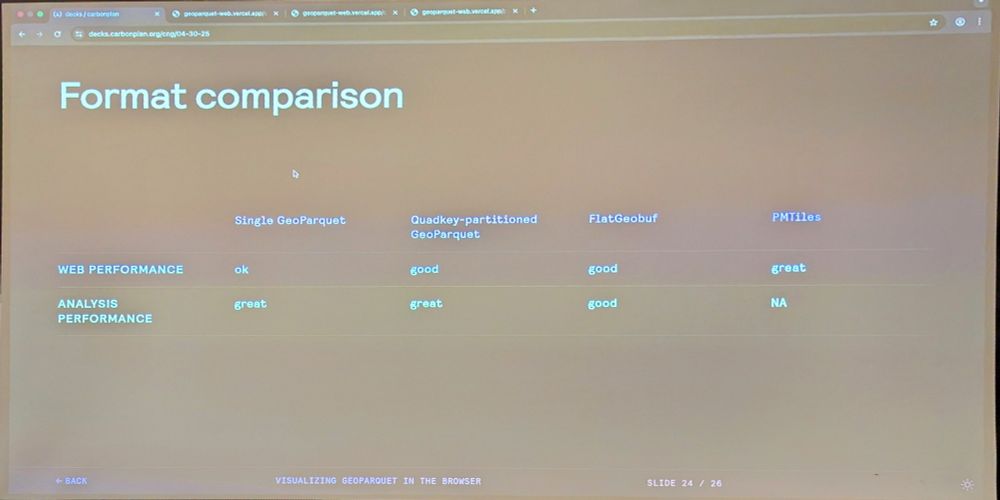Safe Software's Dean Hintz talks about #FME's role in building #cloudnativegeo workflows. This talk covers formats like GeoParquet, FlatGeobuf & real-world case studies like the urban heat risk in NYC for more focused weather alerts
▶️ youtu.be/PE0MSjy7EA8

Safe Software's Dean Hintz talks about #FME's role in building #cloudnativegeo workflows. This talk covers formats like GeoParquet, FlatGeobuf & real-world case studies like the urban heat risk in NYC for more focused weather alerts
▶️ youtu.be/PE0MSjy7EA8
- Fast bounding box queries, pushed down to the original file format
- Sync/async data reading through obstore
- Fully Rust with no GDAL means easy installation
geoarrow.org/geoarrow-rs/...

- Fast bounding box queries, pushed down to the original file format
- Sync/async data reading through obstore
- Fully Rust with no GDAL means easy installation
geoarrow.org/geoarrow-rs/...
Incidentally I've found more than a few locations situated in the wrong district...




Incidentally I've found more than a few locations situated in the wrong district...
do-me.github.io/flatgeobuf-v...
do-me.github.io/flatgeobuf-v...
https://do-me.github.io/flatgeobuf-viewer/

https://do-me.github.io/flatgeobuf-viewer/
It allows to convert geospatial data (TopoJSON, Shapefile, Geopackage, GML, KML, GPX, FlatGeobuf, CSV, ODS & XLSX) to and from GeoJSON format. Practical and essential 🥰
code: github.com/riatelab/geo...
demo: observablehq.com/@mthh/hello-...
It allows to convert geospatial data (TopoJSON, Shapefile, Geopackage, GML, KML, GPX, FlatGeobuf, CSV, ODS & XLSX) to and from GeoJSON format. Practical and essential 🥰
code: github.com/riatelab/geo...
demo: observablehq.com/@mthh/hello-...
www.getbounds.dev

www.getbounds.dev

Using the same state/county/tract zoom strategy, display National Risk Index data, with Expected Loss colors/legend, too! Click poly for NRI data.
www.femafhz.com/map/27.82240...

Using the same state/county/tract zoom strategy, display National Risk Index data, with Expected Loss colors/legend, too! Click poly for NRI data.
www.femafhz.com/map/27.82240...
You get the similar shocking results.
You get the similar shocking results.
Too much new stuff to keep up with! 😊
flatgeobuf.org
Too much new stuff to keep up with! 😊
flatgeobuf.org
Geo datastructures is either something you are deep into, or you will find some new data structure or extended implementation every two days... I'm clearly in the latter group.
Geo datastructures is either something you are deep into, or you will find some new data structure or extended implementation every two days... I'm clearly in the latter group.
cloudnativegeo.org/blog/2024/12...
www.delnorteresort.com/ukbus/
www.delnorteresort.com/ukbus/
www.cloudnativemaps.com/examples/roa...
www.cloudnativemaps.com/examples/roa...
GeoParquet is a complex dog and requires a stack from hell to retrieve a bbox of data in browser, unlike FGB. FGB and COPC (cloud optimized point cloud) are the only cloud native vector formats.
GeoParquet is a complex dog and requires a stack from hell to retrieve a bbox of data in browser, unlike FGB. FGB and COPC (cloud optimized point cloud) are the only cloud native vector formats.
www.cloudnativemaps.com
#gischat
www.cloudnativemaps.com
#gischat
Long live the geopackage! (and flatgeobuf)
Long live the geopackage! (and flatgeobuf)
If you expect mostly column-based operations, use a column-based format (e.g. geoparquet). If you expect mostly row-based operations, use a row-based format (e.g. flatgeobuf).
Also, consider various speed, storage, processing requirements/scenarios.
If you expect mostly column-based operations, use a column-based format (e.g. geoparquet). If you expect mostly row-based operations, use a row-based format (e.g. flatgeobuf).
Also, consider various speed, storage, processing requirements/scenarios.

